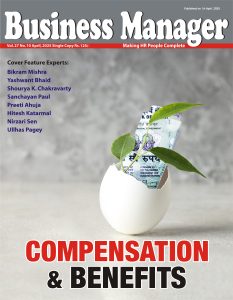United Kingdom has observed Mental Health Awareness Week from May 13th to May 19th, spreading awareness and uniting the nation to promote better mental health since 2001. Every year they focus on a specific theme, and this year, they focus on the profound impact of physical movement on mental well-being, encapsulated by the hashtag “MomentsforMovement.” The benefits of physical activity on both physical and mental health are well-documented, emphasizing its critical role in fostering overall wellness.
The discourses around movement and mental health also draw our attention towards the importance of movement at the workplace. Movement behaviour, which encompasses how much time an individual spends sitting, sleeping, or being physically active, is a significant lifestyle factor that impacts both mental and physical health. In the context of the workplace, integrating movement into daily routines is not only pivotal for physical health but also essential for maintaining and enhancing mental well-being. This article explores the significance of movement within the workplace, highlighting its relevance and how to incorporate movement breaks to promote employee well-being.
Global Action Plan on Physical Activity (GAPPA) 2018–2030 of the World Health Organization (WHO) have aimed to improve health and well-being parameters by improving levels of physical activity. Currently, 27.5% of the world population is not sufficiently active, with men at 23.4% and women at 31.7%. GAPPA aims to reduce these rates by 10 to 15% by 2030. WHO aims to achieve 13 of the 17 sustainable development goals (SDGs)- 2030 through increased physical activity. Looking at the national picture, Indians are far more physically inactive in comparison to the global population. In India, 54.4% of the population are inactive, out of which 41% are males and 59.6% are females. In response to India’s physical activity rate being twice the global figures, the Indian government launched the ‘Fit India’ campaign in 2019. The campaign is aligned with the WHO’s recommendations to encourage 30-60 minutes of physical activity per day.
Also read: Nearly 90% Indian employees say they are suffering, over 40% are sad: Gallup Workplace Report
Movement in the workplace
According to the Mental Health Report (2022), “Mental health is critically important to everyone, everywhere.” Mental well-being is not incumbent on an individual or families only but a collective responsibility. As the working age population spends substantial amount of time at workplace, employment and working condition acts as a strong predictor of mental well-being. Hence, workplace can be an important venue for health promotion interventions. Extensive research has shown that physical activity (PA) can have beneficial effects on mental health, while excessive sedentary behaviour (SED) can have detrimental effects. Studies shows that poor mental health issues commonly result in absenteeism and presenteeism, organisation may see benefits from intervention aimed at improving movement behaviour. Reflecting on the principles of the Ottawa Charter, WHO’s 2022 guidelines on mental health at work emphasise that healthy lifestyle is not the individual’s responsibility but also that of those who creates the environment in which we live, play, and work.
New research suggests that more than physical activity an organisation need to focus on a 24-Hour movement approach. According to the 24-Hour movement paradigm, physical activity, sedentary behaviour and sleep are movement behaviour along a continuum that represents intensity from minimal to maximal. Together these three behaviours form a sum of an individual’s movement across a 24-Hour Day and are inter-related and co-dependent. It does not matter if you work out for an hour in a day, it’s the interaction of PA, SB and sleep that matters.
Organisation can greatly benefit their employees’ mental well-being by embedding the 24-Hour movement guidelines within their policies. It can use various strategies to promote physical activity, reduce sedentary time and ensure adequate rest among employees throughout the day. Here are some of the strategies that can be leveraged:
Active commute
Organisations can promote active commutes to the workplace, a study published in Frontiers in Public Health find that employees who engage in active commuting report better physical and mental health which can be reflected in positive organisational behaviour and productivity. One notable example is SAP, employees at SAP are encouraged to use forms of active transportation by offering secure bike storage, shower facilities, and changing rooms. They also organise cycling events and offer incentives for active commuters.
According to the Mental Health Report (2022), “Mental health is critically important to everyone, everywhere.” Mental well-being is not incumbent on an individual or families only but a collective responsibility. As the working age population spends substantial amount of time at workplace, employment and working condition acts as a strong predictor of mental well-being.
On-site fitness facility
Organisations can take a holistic approach to create a healthy environment by providing on-site fitness facility and classes during lunch breaks or after work to enhance employee well-being. Google provides employees with access to gym facility a variety of fitness classes such as yoga, pilates, and aerobics as part of the wellness programs.
Flexi workstations
Standing desks and active sitting like stability balls and ergonomic chairs can not only improve the well-being of the employees but can also result in a more productive and engaged workforce. Companies like Google, Facebook, and Deloitte offer flexible workstations in their offices.
Movement breaks
Organisation can introduce regular short breaks of 2 minutes to ensure movement and stretches and promote a more active environment. They can hold meetings while walking instead of sitting in a conference room, different kinds of apps can be used to drop a reminder or a prompt to employees to move every hour.
Nutrition and sleep
Nutrition and sleep are very important aspects of the 24-hour movement strategy which can help with the energy levels for major cognitive functions. Office cafeterias must serve healthy snacks and meal options and ensure water stations to encourage hydration. Napping pods or quiet areas for short naps can help replenish energy levels.
Also read: How Caring Employers Foster Career Development by Chandrashekhar Thanky
Promoting a culture of health
Organisations must strive to foster an environment that supports and promotes a culture of health with a focus on leadership support, employee involvement and incentives. Leaders should model and communicate active behaviour by developing a subculture that values prioritizing health. Organisations can establish a culture where movement and breaks are encouraged and not stigmatized.
Conclusion
In conclusion, integration of movement into the workplace isn’t just a fad but a vital component in cultivating a healthier and productive work environment. Embedding movement into employees’ daily routines is a holistic approach that can offer significant benefits to both individuals and organisation. Implementing these proactive initiatives can allow companies to enhance employee well-being and foster a more dynamic, healthy, and productive workplace. Advocating a health-centric culture goes beyond responsibility, it is a strategic move that can yield sustainable growth and success.
Stay connected with us on social media platforms for instant updates click here to join our LinkedIn, Twitter & Facebook

























